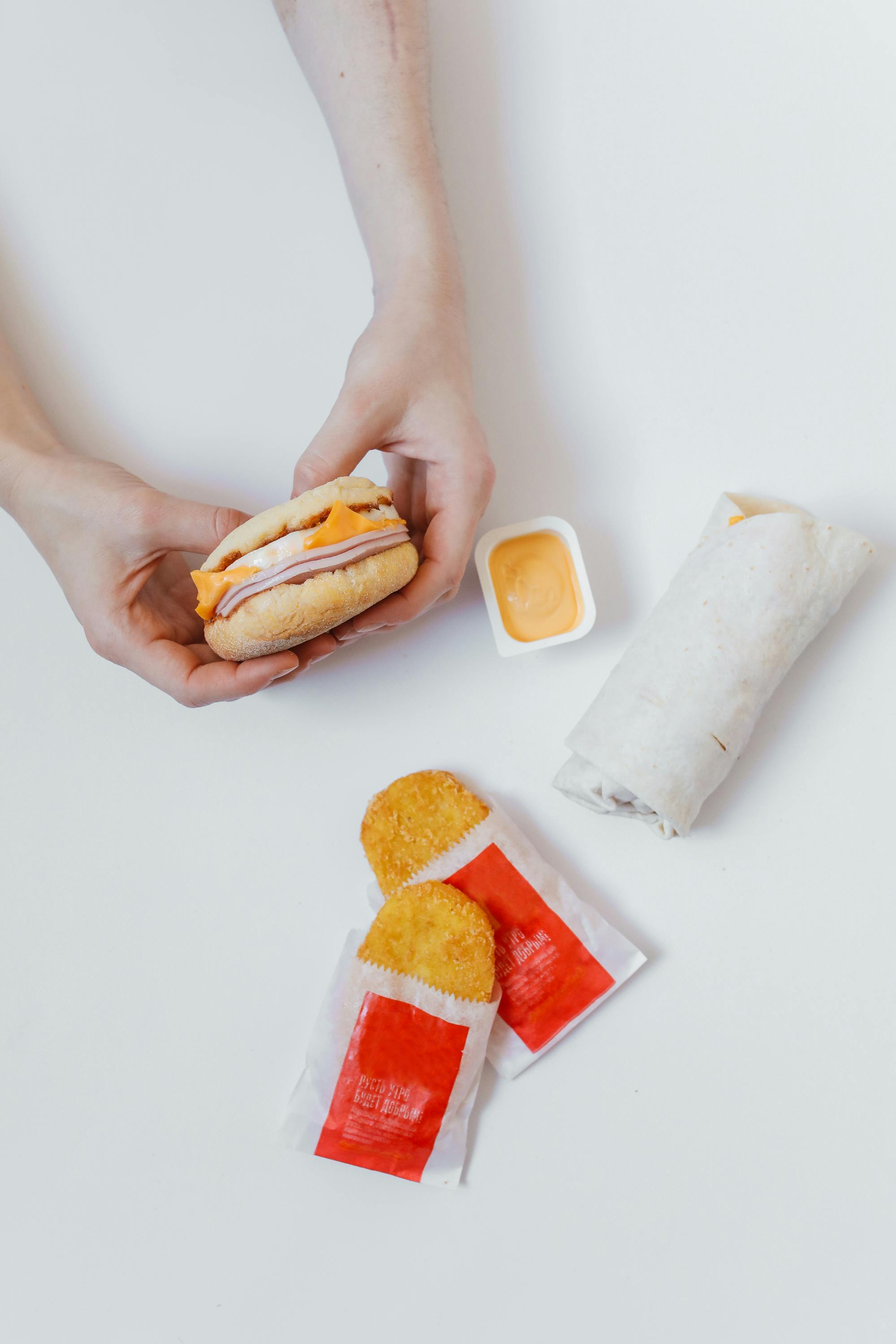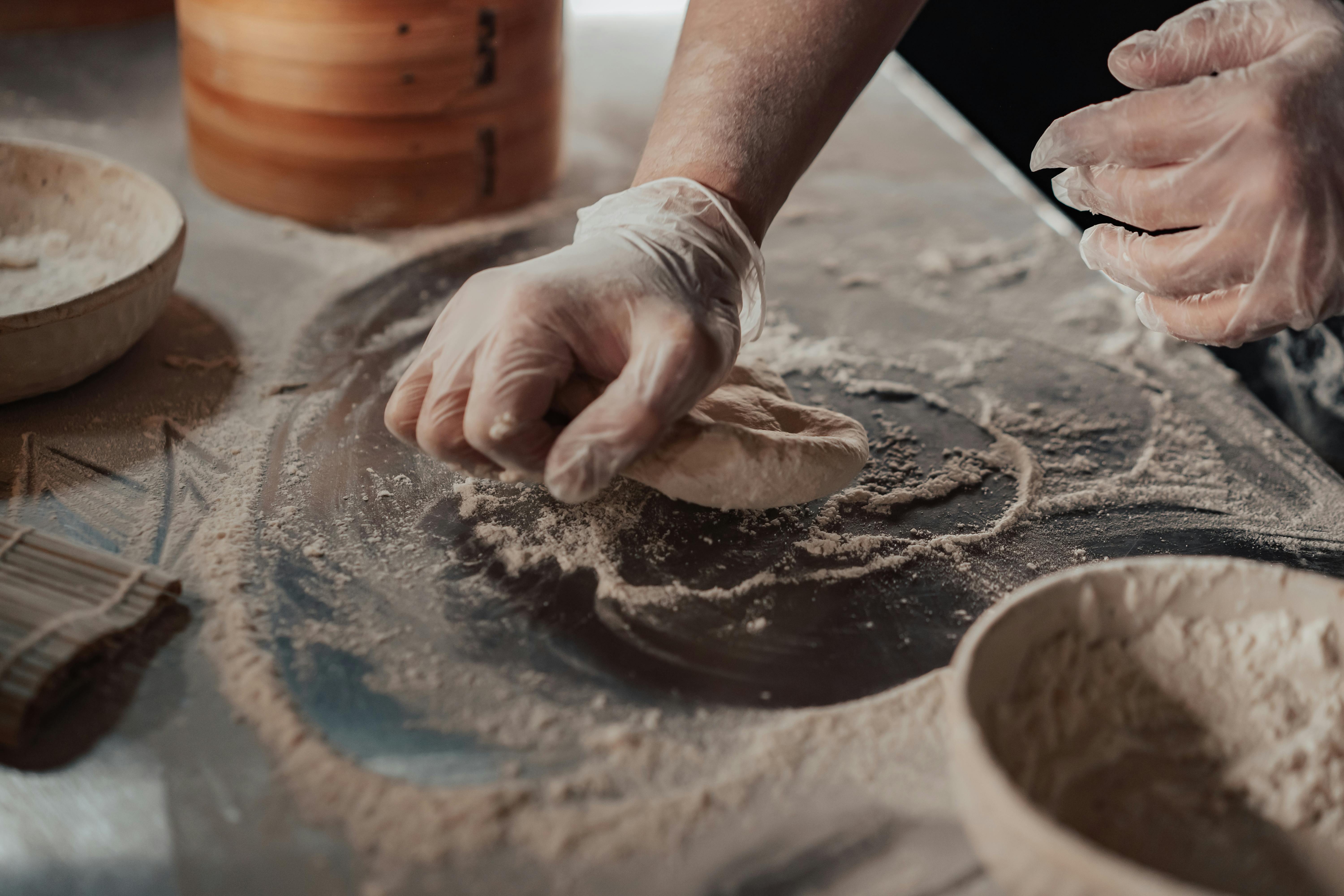How to Make the Perfect Burrito: A Step-by-Step Expert Guide
Let’s get real for a second. The “perfect burrito”—if we’re being honest—rarely comes from a chain restaurant, no matter how many TikTok hacks go viral. In my experience (and I say this having wrapped, torn, and taste-tested more burritos than I care to admit), it’s the home-cooked burrito—where hands, hunger, and a little chaos all meet—that delivers genuine satisfaction. But can anyone at home achieve that crisp-yet-soft, flavor-bomb, structural dream? Absolutely. Provided, you know, someone hands you the *actual* secrets instead of vague “just roll tight” advice. This post is that someone. If you’ve ever made a burrito that fell apart, was bland, or just didn’t hit *that* spot—well, you’re definitely not alone. Today, I’ll walk you through why, share every trick I’ve learned (and occasionally botched), sprinkle in expert insights, and show you a foolproof, science-meets-soul method for crafting the burrito of your dreams.
And if you’re sitting there thinking “I already make a pretty good burrito,” let me ask—do you really know the precise order to layer fillings for heat, texture, and leakage prevention? What about the one hack that lets you freeze them like a pro, or why sourcing the right tortilla makes or breaks the whole thing? This isn’t just another burrito recipe—it’s the definitive field manual, pulled from decades of stubborn culinary curiosity, powered by peer-reviewed food science1, and tuned for genuine home-kitchen success. Let’s dig in.
Why Most Home Burritos Fail (And How to Fix It)
I wish I could say every burrito I’ve made was a thing of beauty—tightly wrapped, structurally sound, a feast for the senses. I can’t. Most broke. Some oozed. One or two ended up as “burrito salad”—because I genuinely lost patience. What tripped me up? Honestly, the same things plaguing home cooks everywhere:
- Choosing the wrong size tortilla (too small and you’re doomed)
- Overfilling (we all want “restaurant big,” but physics laughs at overstuffing)
- Incorrect moisture balance (soggy fillings = rupture)
- Hasty, under-confident wrapping technique
- No “cheese glue” (yes, that’s a thing—more on this in a minute)
Key Insight
The number one home burrito fail is overconfidence—the idea you can “just stuff and roll.” True burrito mastery is all about restraint, order of operations, and structural logic. Once you get that, everything changes.
Selecting the Right Tortilla: Size, Type, and Quality
Let’s clarify something upfront: your burrito is only as good as your tortilla. No joke. I learned this the hard way back in 2016 when a family dinner ended in “burrito bowls” because I cheaped out on tortillas. Here’s the thing—flavor, texture, and flexibility all matter, but size is king. The best burritos start with a 10- to 12-inch flour tortilla—not one centimeter smaller2. You want a blanket, not a napkin. And unless you live in northern Mexico or New Mexico—where thick, pillowy homemade tortillas are tradition—avoid those too-stiff, supermarket “wraps.”
- Best for structure: 10-12″ wheat flour tortilla, gently warmed and pliable
- Corn tortillas? Great for tacos, not burritos—different chemistry
- Fresh local tortillas or “raw” tortillas (that you cook yourself) > pre-cooked “wraps”
Tortilla Tip
Always warm your tortilla first, either on a hot comal, skillet, or directly over the burner for a few seconds. Flexibility is crucial—a cold tortilla cracks and ruins the fun.
So, what about flavor? Flour tortillas are neutral for a reason: they’re the blank canvas. But if you come across spinach, tomato, or other “flavored” wraps, proceed with caution. In my opinion, the best burrito is about the fillings—not green-dyed dough. That said, a whole wheat tortilla, done right, can add a subtle nuttiness—great for grilled chicken or veggie burritos. Experiment, but remember the classic formula before you go rogue.
The Holy Trinity: Rice, Beans, and Protein Selection
This is where — if we’re being authentic and rigorous — burrito construction moves from “snack wrap” territory into the realm of legit, craveable comfort food. What amazes me (still, after all these years) is how much debate exists about the right kind of rice, the “correct” bean-to-protein ratio, or whether you should even include both. Let’s clear it up. From both the classic California Mission-style to the weighty Tex-Mex monster — rice, beans, and *something hearty* are the core. All other ingredients orbit around this sun.
A. Rice
- Use short- or medium-grain white rice (think Japanese or Calrose) for a sticky, but not mushy, base. Long-grain can be dry and “spiller.”
- Season with salt, a touch of oil, and—controversial but perfect—a squeeze of lime/fresh cilantro, especially for “San Fran” burritos.
- Don’t over-moisten! Too-wet rice = soggy tragedy.
B. Beans
- Black beans vs. pinto beans: Black is king for “lighter” or veggie burritos; Pintos win authentic points with carnitas/asada.
- Go for “whole” beans, lightly mashed, not “refried” mush unless you love that Tex-Mex diner style.
- Drain really well, or use the beans to glue down loose rice in your core filling!
C. Protein
- Carne asada (grilled steak), pollo asado (marinated chicken), carnitas (slow-cooked pork), or barbacoa (shredded beef)—these are the classics. Don’t overcomplicate the seasoning: lime, salt, garlic, cumin, and maybe a whisper of chili powder.
- Tofu, jackfruit, and mushroom duxelles? In 2025, plant-based is not just accepted—it’s celebrated in the best burrito shops3.
- High moisture = wrap fails. Pat dry and season at the very end.
Pro Kitchen Ratio
For a standard 12” tortilla: Stick to 1/2 cup rice, 1/3 cup beans, and 1/3 cup hearty protein. Never exceed this, unless you want a “burrito bowl.” It took me a dozen soggy messes to learn this the hard way.
Flavor Layering: Sauces, Cheeses, and Fresh Elements
Let’s be honest, what keeps you coming back to your favorite burrito joint? It’s not just heat or chew—it’s the avalanche of flavors, temperatures, creamy contrasts, the unexpected tang or cool crunch folded in at exactly the right spot. Honestly, this is my jam—if I can be a little enthusiastic. Layering is the difference between a dry, monotonous bite and a “shivers down your spine” mouthful. So how do you stack your elements for peak flavor (and structure)?
- Start with protein (meat/tofu) in a tight line slightly off center.
- Add rice directly on top, not beside; it absorbs savory/meaty juices.
- Beans next—either as a partial glue under the rice or atop, if sticking with tradition.
- Shredded cheese next to beans (not directly on hot rice/protein)—so it melts, creating “cheese glue.” Feel free to combine sharp cheddar, Monterey Jack, or Mexican Oaxaca for that perfect pull.
- Sauce/salsa: less is more. Drizzle, don’t soak. My best advice? Add more at the table, not in the wrap.
- Fresh elements (crisp romaine, diced onions, cilantro, pickled jalapeno/radish): Place these last, so they’re shielded from heat. You want “crunch,” not wilt. Remember, their job is to cut through richness.
Building and Wrapping: Technique and Fail-Proof Methods
Wrapping a burrito, I’ll admit, can be a high-pressure moment—especially with hungry friends or kids hovering nearby. It took me years (no exaggeration) to master the classic “diamond fold”—and dozens more to realize you can fix most mistakes with a second tortilla or well-placed foil. Here’s the proven system:
- Warm your tortilla until floppy—20 seconds on a dry pan, or 10 seconds in the microwave under a damp towel.
- Lay all main fillings (protein, rice, beans, cheese, sauce, fresh bits) in a tight cylinder, slightly below center. Don’t “spread,” stack.
- Fold in tortilla ends (left and right)—just enough to cap the filling.
- Tuck the bottom tortilla edge up and over the pile. Use your fingertips to clutch the filling as you roll forward, keeping everything snug.
- Roll—tight, but not violently. Hold tension, but don’t rip. The seam should end on the bottom.
Fail-Safe Tip
If your tortilla tears mid-wrap (it happens!), patch with a piece of warm tortilla or wrap the whole burrito in foil for a classic “Mission-style” experience (plus, it keeps things hot and portable).

Regional and Creative Variations
Let me pause a second. There’s a unique magic in realizing your “perfect burrito” might look totally different than mine—and that’s not a bug, it’s a feature. The diversity among burrito traditions is astonishing—a testament to migration, climate, regional taste, and adaptive ingenuity. In California’s Mission District, the “burrito” is a steam-pressed fortress. In northern Mexico, you get something lean and minimal—a simple meat and bean bundle meant for the road. The Tex-Mex “wet burrito” is bathed in sauce and cheese, barely recognizable by Mexican standards4. What’s the upshot? Don’t get boxed in—draw inspiration from each style.
Inspiration Grid
I’ve mapped some favorites in this table—feel free to remix, riff, and experiment. Each origin brings a new flavor logic:
| Region/Type | Filling Profile | Sauce/Extras | Unique Tip |
|---|---|---|---|
| Mission (SF, CA) | Rice, beans, steak/chicken, guac | Pico de gallo, hot sauce, foil wrap | Steam tortilla after wrap for soft bite |
| “Wet” Tex-Mex | Ground beef, cheese, beans, rice | Red chili sauce, melty cheese on top | Serve in shallow dish, knife & fork only |
| Norteño (Chihuahua) | Machaca (dried beef), beans | None (minimal) | Simple, small tortilla for travel |
| Breakfast Burrito (US Southwest) | Egg, chorizo, hash browns, cheese | Salsa verde, crema | Wrap potato layer first to stop leaks |
- California-style: Trust the rice/bean/protein/guac logic. Always go heavy on fresh salsa and foil-toasted tortilla finish.
- Breakfast burritos: Crisp those hash browns, drain the eggs, and don’t forget citrus or pickled jalapeño for “wake-up” zing.
- Korean-Mexican fusion: Bulgogi beef, kimchi, gochujang, cilantro—contrarian, but mind-blowingly good if you want bold heat and tang5.
- Veggie burritos: Mushrooms sautéed until crisp, sweet potato with cumin, and *lots* of fresh herbs. Don’t skimp on crema or spicy “green” sauces.
Did You Know?
The modern “burrito” was first referenced by name in 20th century Los Angeles newspapers, but versions date back centuries in northern Mexico. Tortilla-wrapped meat was a practical, heat-stable snack for workers6.
Advanced Tips: Freezing, Reheating, Meal Prep
Now we get tactical. Maybe you want burritos on deck for busy weeknights, or you’re game-planning a mountain picnic. Here’s what has actually worked in my kitchen, after a painful run of freezer-burned, gluey disasters and leaky reheats:
- For meal prep/freezing, skip watery ingredients (fresh tomato, sour cream, lettuce). Add them fresh after reheating for best texture.
- Cool all fillings to room temp before wrapping—slice the risk of condensation and sogginess.
- After wrapping, let the burrito sit seam-side down for 5 minutes—cheese sets, steam “glues” everything together.
- Double wrap in foil, then store in a freezer bag. To reheat: 1–2 minutes in microwave (still in foil, if your microwave allows foil use safely, otherwise remove first!), then crisp in a hot skillet for crunch.
- Pro tip: Label burritos by content (C for chicken, P for pork, V for veggie) on the foil so you never play “meat roulette.”
- Have leftover burrito mix? Try “taco salad” bowls, or quick nacho starters.
- If you routinely freeze burritos for the family, consider investing in a real tortilla press and buying fresh local tortillas in bulk for best results7.
By the way, the ultimate power move? Freeze a batch before a camping trip or road trip—nothing brings people together like unwrapping a still-warm burrito under the stars. Trust me.
Burrito FAQ: Your Pressing Questions Answered
I get questions—loads of them—almost weekly. Across years of teaching cooking classes and running pop-ups, the same issues crop up again and again. It’s funny: no matter your skill level, a truly perfect burrito will humble you. Below are the top queries with honest, field-tested answers.
- Can I use corn tortillas for burritos? Not recommended. Corn tortillas lack the gluten structure and pliability for classic burrito wrapping. Save these for tacos or enchiladas8.
- How do I keep things from getting soggy? Always cool fillings first. Layer cheese or beans as an inner “moisture barrier.” Skip large amounts of salsa inside—add it at the table.
- What’s the best cheese? Blend sharp cheddar, Jack, or Mexican cheeses like Oaxaca or queso asadero. “Pre-shredded” works, but whole block melts creamier.
- Can I meal-prep healthy burritos? Absolutely—lean proteins, brown rice, fiber-rich beans, extra veg. Just watch sauce and cheese volumes for balance9.
- How can I reheat a burrito so it tastes fresh? Microwave (wrap in damp paper towel) for 1 minute, then crisp in a hot skillet 1–2 min per side. Adds back “street” texture.
Action Step
Make your next burrito intentionally: Choose one new pro tip from this guide (layer order, ratio, reheating hack) and test it tonight. Then—here’s the kicker—take notes on what changes. That feedback loop is everything.
Conclusion and Final Thoughts
Let me step back for a moment. If there’s one thing my years—chasing the “perfect burrito”—have drilled in, it’s this: The pursuit itself is the point. Flawless burritos are rare, but each try gets you closer to flavor and technique nirvana (or at least fewer soggy messes). I can’t count the family arguments, the midnight snack fails, or the backyard parties where my “burrito method” evolved. Honestly, those are my favorite memories. With each tweak, each accidental masterpiece, burritos stopped being just food and started representing community, improvisation, and joy. So, don’t stress about perfect ratios or the “right” finishing technique. Use this guide as a blueprint, then let your own taste and experience fill in the delicious gaps.
Ready to Build?
Burrito greatness is always within reach. With the right tortilla, balanced ratios, smart layering, and a fearless roll, you’ve got every ingredient for success. The rest? That’s up to you. Now, get in the kitchen—and don’t forget to have fun (and email me your burrito triumphs or disasters!).
References
Works Cited & Further Reading



